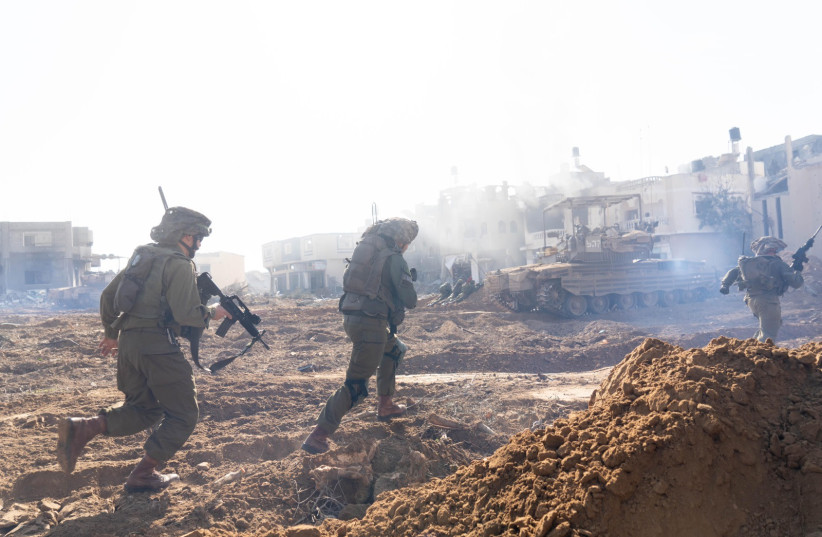It is too early to say whether the latest push by the IDF in western Khan Yunis, which started on Monday, will be a game-changer in the current Israel-Hamas war.
The IDF's minimal goal is to tear apart Hamas's Khan Yunis battalions as part of a third stage in southern Gaza and a fourth stage of the entire Gaza invasion.
This would leave none of Hamas's top organized forces functioning in Gaza.

In the first stage of the Gaza invasion, southern Gaza encountered few IDF ground forces, and the focus was on dismantling Hamas's prized northern Gaza battalions.
This time period ran from October 25 until early December.
In early December, at the same time that the IDF sought to finish off Hamas's smaller remaining northern Gaza forces and take apart its much smaller central Gaza forces, the invasion of Khan Yunis and southern Gaza went into high gear.
From early December until late December, the IDF made significant progress taking apart Khan Yunis's northern and eastern battalions.
However, from late December until January 22. Progress was much slower, with most updates from the IDF talking about smaller skirmishes against single digits or very small double digit forces of Hamas.
It seemed that Hamas forces had fled underground or to western Khan Yunis.
Looking back, the IDF probably used that time period to start probing and planning its next big push in western Khan Yunis.
<br>Khan Yunis crucial to defeating Hamas
If the IDF can rout Hamas's forces in western Khan Yunis, the only remaining Hamas-organized battalions will be in Rafah, even further south, and in Nuseirat in central Gaza.
While top Israeli defense officials would like to take apart these battalions as well, completing the elimination of the Gaza City and Khan Yunis battalions will be a further long-term blow to Hamas's operations and morale.
The recent intensifying of attacks in Khan Yunis has also brought the average of firing Hamas rockets to an all-new low, something the IDF was not able to do in around 15 years of prior rounds.
All of this is true no matter what happens next.
Of course, what happens next still matters a lot.
Will this pressure lead Hamas's leaders to finally cut another hostage exchange deal?
Can the IDF locate Hamas's leader and hostages in Khan Yunis to bring about a moment of truth that will place a whole new level of pressure on the terror group's top people?
Or will they remain hidden in Khan Yunis tunnels for an extended period, or have they fled to Rafah or some other less well-known Gaza village?
Such options offer them less control of the fighting and a smaller defensive network, but could prolong the amount of time until the IDF finds them, which in and of itself maintains pressure on Israel to cut a less good deal to receive the hostages back.
Also, it is unclear whether routing Hamas in Khan Yunis will improve the standoff between Israel and the US (and other Israeli Western and moderate Arab allies) about how to handle managing Gaza "The Day After" the IDF withdraws and hands it to some other third party or group of third parties.
But there is no question that tactically the push could be a new victory point for the IDF over Hamas, and it potentially could also positively impact the broader strategic picture.
